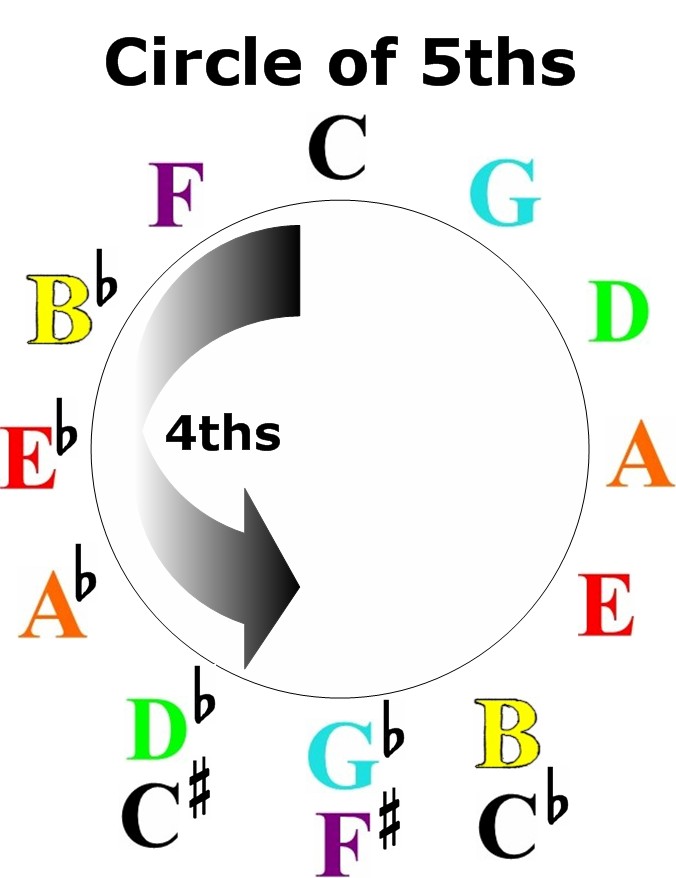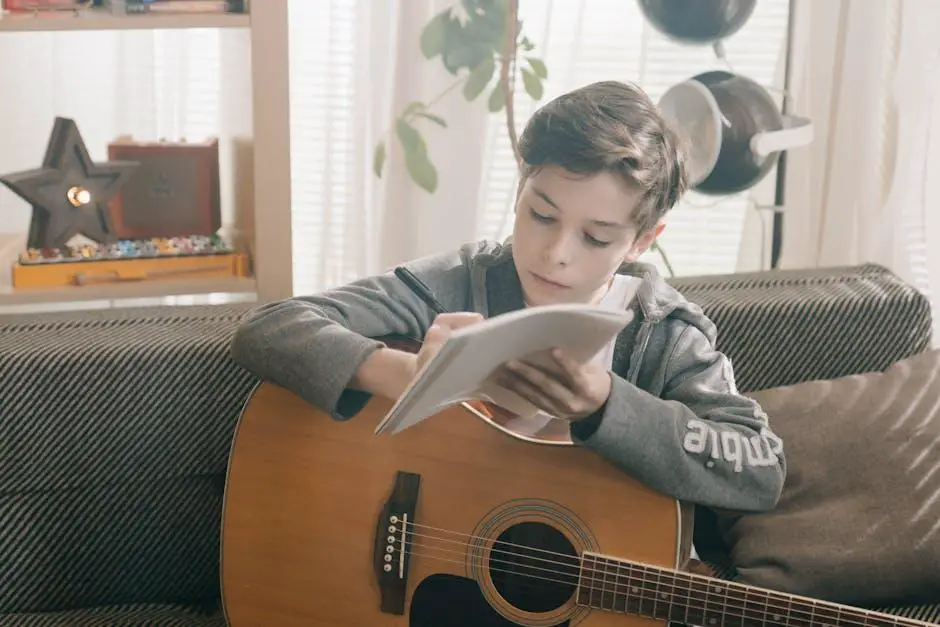Are you tired of feeling stuck in the same chord progression loop? Do your transitions sound more like awkward speed bumps than smooth sailing? Fear not, fellow musicians! In this article, we’re diving into the world of mastering chord progressions and sharing top tips for seamless transitions that will have you grooving like a pro in no time. So grab your guitar, keyboard, or whatever instrument tickles your fancy, and get ready to level up your musical game with our expert advice. Let’s rock and roll, baby!
Contents
- 1 Unlocking the Secrets of Effective Chord Transitions
- 2 Exploring Common Chord Progressions in Popular Music
- 3 Enhancing Your Song’s Emotional Impact Through Chord Changes
- 4 Navigating Through Diatonic and Non-Diatonic Progressions
- 5 Implementing Secondary Dominants for Smooth Transitions
- 6 Creative Approaches to Modulating Between Keys
- 7 Practical Exercises to Master Advanced Chord Progressions
- 8 FAQs
- 9 In conclusion, keep on jamming!
Unlocking the Secrets of Effective Chord Transitions
So, you want to know the secrets of effective chord transitions, eh? Well, you’ve come to the right place! Chord transitions can be tricky, but with a little magic (and by magic, I mean practice), you can master them like a boss.
First things first, let’s talk about finger positioning. The way you position your fingers on the fretboard can make all the difference in how smoothly your chord transitions go. Make sure your fingers are nice and close to the frets, and remember to arch them so they don’t accidentally mute any strings. Trust me, your chords will sound oh-so-much sweeter this way.
Next up, let’s chat about timing. The key to nailing those chord transitions is all in the timing. Take a deep breath, count in your head (or out loud, if you’re feeling brave), and make sure you switch chords right on the beat. It’s like a dance, really. And no one likes a dancer who can’t keep time, am I right?
And finally, don’t be afraid to experiment with different fingerings. Sometimes, a different fingering can make all the difference in how smoothly you can move from one chord to the next. **Play around with different fingerings until you find one that feels just right.** Before you know it, you’ll be transitioning between chords like a rockstar.
Exploring Common Chord Progressions in Popular Music
Have you ever noticed that most popular songs seem to follow the same chord progressions? It’s like they all went to the same chord progression school and graduated with honors in G-C-D. But fear not, fellow music enthusiasts, for there is a whole world of common chord progressions waiting to be explored!
One of the classics that never fails to make an appearance in the world of popular music is the I-IV-V progression. Also known as the “three-chord wonder,” this progression is like the Swiss Army knife of chord progressions – versatile, reliable, and always there when you need it. Whether you’re listening to rock, pop, blues, or even country, chances are you’ll come across the I-IV-V at some point.
But why stop at three chords when you can have four? Enter the ii-V-I progression, also known as the “jazzy friend” of chord progressions. This sequence adds a touch of sophistication and intrigue to any song, making it perfect for those moments when you want to sound like you know what you’re doing without actually knowing what you’re doing. Plus, it gives you an excuse to show off your jazz hands.
And let’s not forget about the timeless vi-IV-I-V progression, affectionately known as the ”feel-good formula.” This progression has the power to instantly lift your spirits, make you want to sing along, and maybe even dance a little. It’s like a musical hug in chord form – warm, comforting, and always there to remind you that everything is going to be okay.

Enhancing Your Song’s Emotional Impact Through Chord Changes
Have you ever listened to a song and felt your heartstrings being tugged at, but couldn’t quite put your finger on why? Chances are, the secret lies in the chord changes. By strategically altering the progression of chords within your song, you can enhance its emotional impact and leave your listeners feeling all the feels.
One way to achieve this is by utilizing **minor chords**. Minor chords have a more melancholic and somber sound compared to their major counterparts, making them perfect for conveying sadness, longing, or heartbreak. Incorporating minor chords into your song can instantly elevate its emotional depth and make your listeners reach for the tissues.
Another trick to enhance emotional impact is by employing **diminished chords**. These dissonant and tense chords create a sense of unease and tension, perfect for building suspense or adding a touch of darkness to your song. By tossing in a diminished chord at just the right moment, you can keep your listeners on the edge of their seats and leave them craving more.
Lastly, don’t underestimate the power of **chord inversions**. Inverting chords can create a sense of movement and instability, adding an extra layer of emotional complexity to your song. By playing around with different chord inversions, you can craft a musical journey that keeps your listeners engaged and emotionally invested from start to finish.

So you’ve finally decided to dive into the world of music theory and explore the magical land of diatonic and non-diatonic progressions. Strap in, because things are about to get wild!
First off, let’s talk about diatonic progressions. These are the good ol’ trusty chord progressions that stick to the rules of the key signature. Think of them as the responsible older sibling who always follows the rules. They may not be the life of the party, but they sure know how to keep things in order.
Now, non-diatonic progressions, on the other hand, are like the rebellious teenager who loves to break all the rules. They throw in unexpected chords that will make your ears perk up and go, “Wait, what was that?” These progressions are spicy, unpredictable, and always keep you on your toes.
Whether you’re navigating through diatonic or non-diatonic progressions, remember to keep an open mind and embrace the beauty of both worlds. Who knows, you might just discover a new favorite progression that will change the way you listen to music forever. Happy exploring!

Implementing Secondary Dominants for Smooth Transitions
Imagine this: you’re jamming along on your guitar, feeling the groove, and suddenly you hit a bump in the road. Your transition from one chord to another isn’t as smooth as you’d like it to be. But fear not, my fellow musicians! Secondary dominants are here to save the day!
By implementing secondary dominants in your chord progressions, you can create that perfect bridge between two chords, making your transitions as smooth as butter. Not sure how to use secondary dominants? Don’t worry, we’ve got you covered with some tips and tricks!
Here are a few ways you can incorporate secondary dominants into your playing:
- Identify the target chord that you want to transition to
- Find the dominant chord that leads to the target chord
- Insert the secondary dominant before the target chord for a seamless transition
So next time you’re feeling stuck in your chord progressions, remember that secondary dominants are your secret weapon for smooth transitions. Get creative, experiment with different combinations, and most importantly, have fun with it!
Creative Approaches to Modulating Between Keys
When it comes to modulating between keys, there are endless possibilities for creativity and experimentation. Instead of sticking to traditional methods, why not try some unconventional approaches to spice up your music?
One fun idea is to blend keys together by gradually introducing elements from the new key while still retaining aspects of the original key. This can create a smooth transition that keeps listeners on their toes.
Another creative technique is to use unexpected chords to segue into a new key. By throwing in a wild, out-of-the-blue chord, you can catch your audience off guard in the best way possible and lead them into a fresh, exciting tonal landscape.
For those feeling particularly adventurous, experiment with non-traditional scales and modes when modulating between keys. Mixolydian, Phrygian, Locrian – the possibilities are endless! Embrace the weird and wonderful, and see where your musical journey takes you.
Practical Exercises to Master Advanced Chord Progressions
So, you’ve mastered the basics of chord progressions and you’re ready to take your skills to the next level. Well, you’ve come to the right place! Here are some practical exercises that will help you conquer those advanced chord progressions like a true rockstar.
First up, let’s tackle some jazz-inspired progressions. Try mixing major and minor chords in unexpected ways to create a jazzy sound. Experiment with substitutions like using a minor 7th chord instead of a dominant 7th. Get creative and see where the music takes you.
Next, challenge yourself with some modal progressions. Dive deep into modes like Dorian, Phrygian, and Lydian to add an exotic flair to your chord progressions. Mix and match modal chords to create unique and captivating sounds that will leave your audience begging for more.
And finally, don’t forget to incorporate some extended chords into your progressions. Experiment with chords like ninth, eleventh, and thirteenth to add layers of complexity and sophistication to your music. Embrace the rich, lush sound of these extended chords and watch your chord progressions soar to new heights.
FAQs
Is it necessary to learn music theory to understand chord progressions?
Well, technically no, you could just randomly mash keys on a piano and hope for the best. But if you want to have some semblance of structure and actually sound good, then yes, it’s a good idea to learn some music theory!
How do I make smooth transitions between different chord progressions?
Think of it like a seamless segue between different tracks on a DJ’s playlist. You want to make sure the transition flows naturally, maybe add some passing chords or common tones to tie everything together.
What are some common chord progressions to learn as a beginner?
The classic I-IV-V progression is a good place to start - it’s like the mac and cheese of chord progressions, simple but oh so satisfying. Once you’ve mastered that, you can move on to more complex progressions like ii-V-I or the circle of fifths.
How can I add flair and variety to my chord progressions?
Get creative! Try experimenting with chord inversions, suspensions, and extensions to spice up your progressions. And don’t be afraid to borrow chords from different keys or use modal interchange to add some unexpected twists.
Any advice for overcoming writer’s block when working on chord progressions?
Just like with a stubborn toddler, sometimes you have to take a step back and approach things from a different angle. Go for a walk, listen to some new music, or just take a break and come back with fresh ears. Inspiration can strike at the most unexpected times!
In conclusion, keep on jamming!
Remember, mastering chord progressions is all about practice and experimentation. So, don’t be afraid to get creative and try out different transitions to see what works best for you. Whether you’re playing the basic I-IV-V progression or experimenting with more complex chords, have fun with it and let your musical journey take you to new heights. So, grab your guitar, piano, or whatever instrument you prefer, and get ready to rock those chord progressions like a pro!



